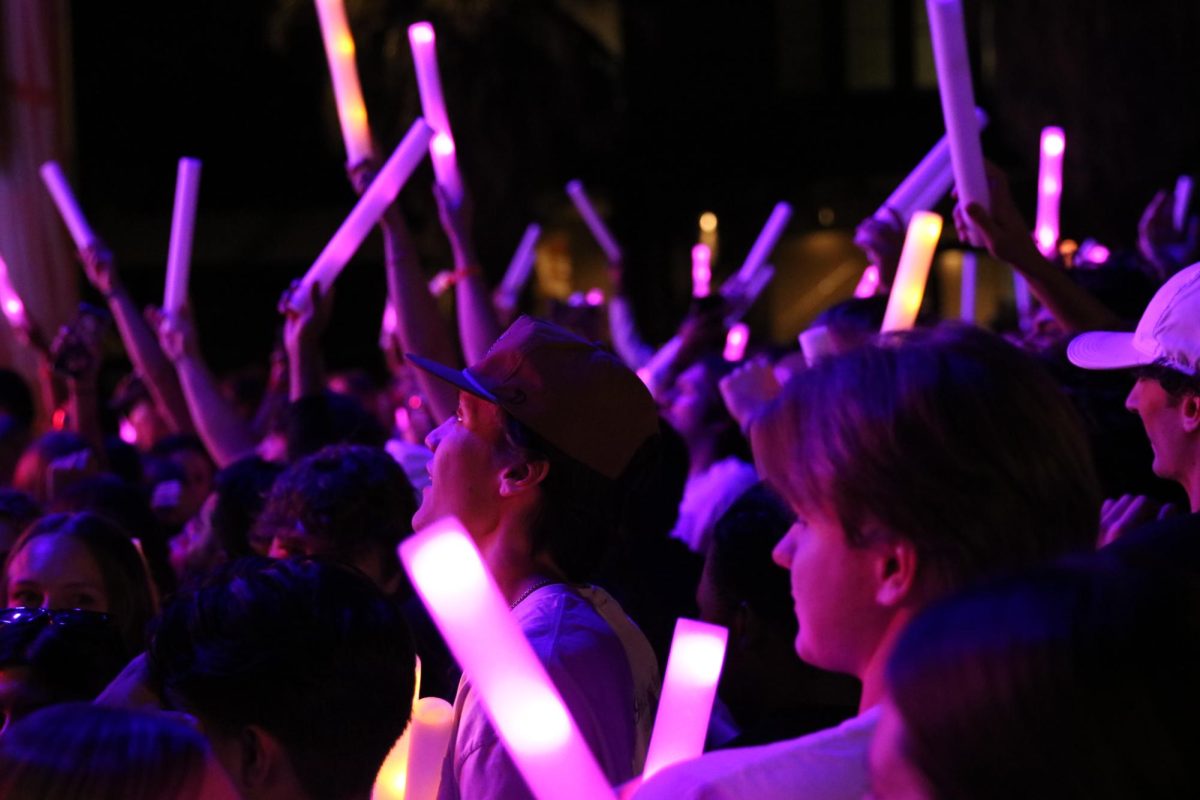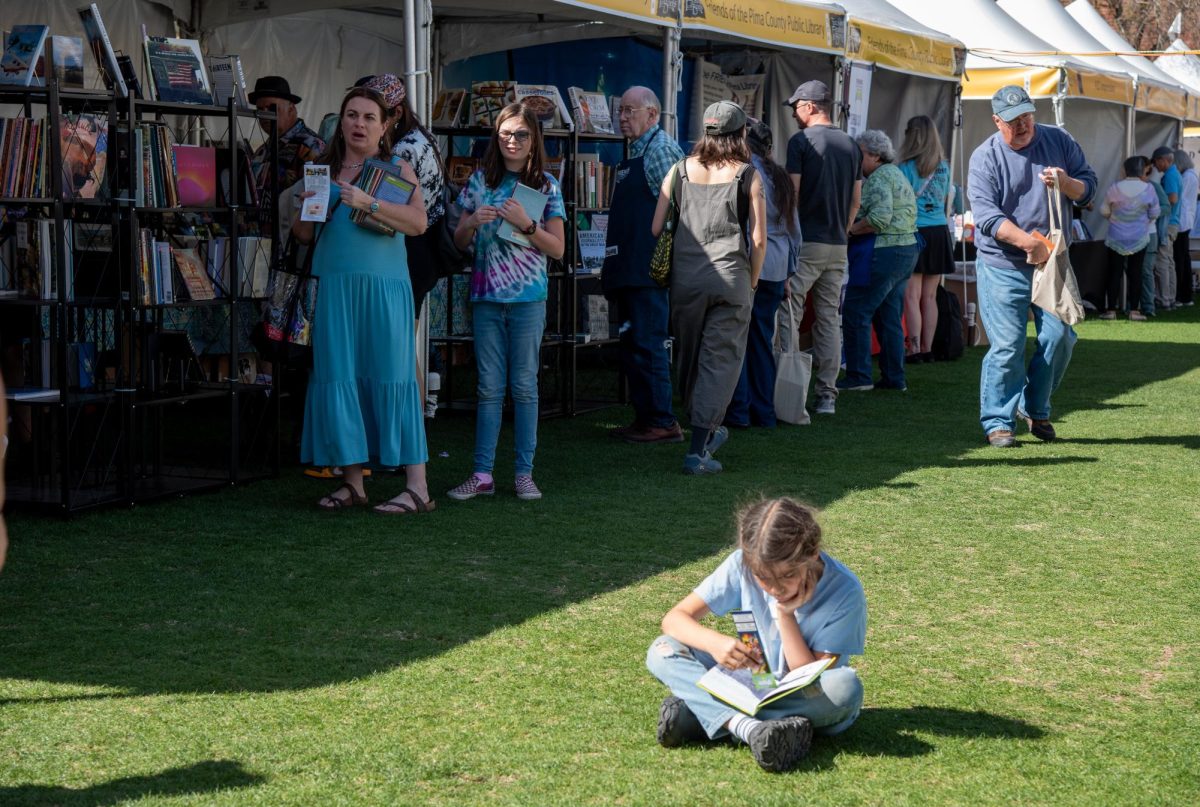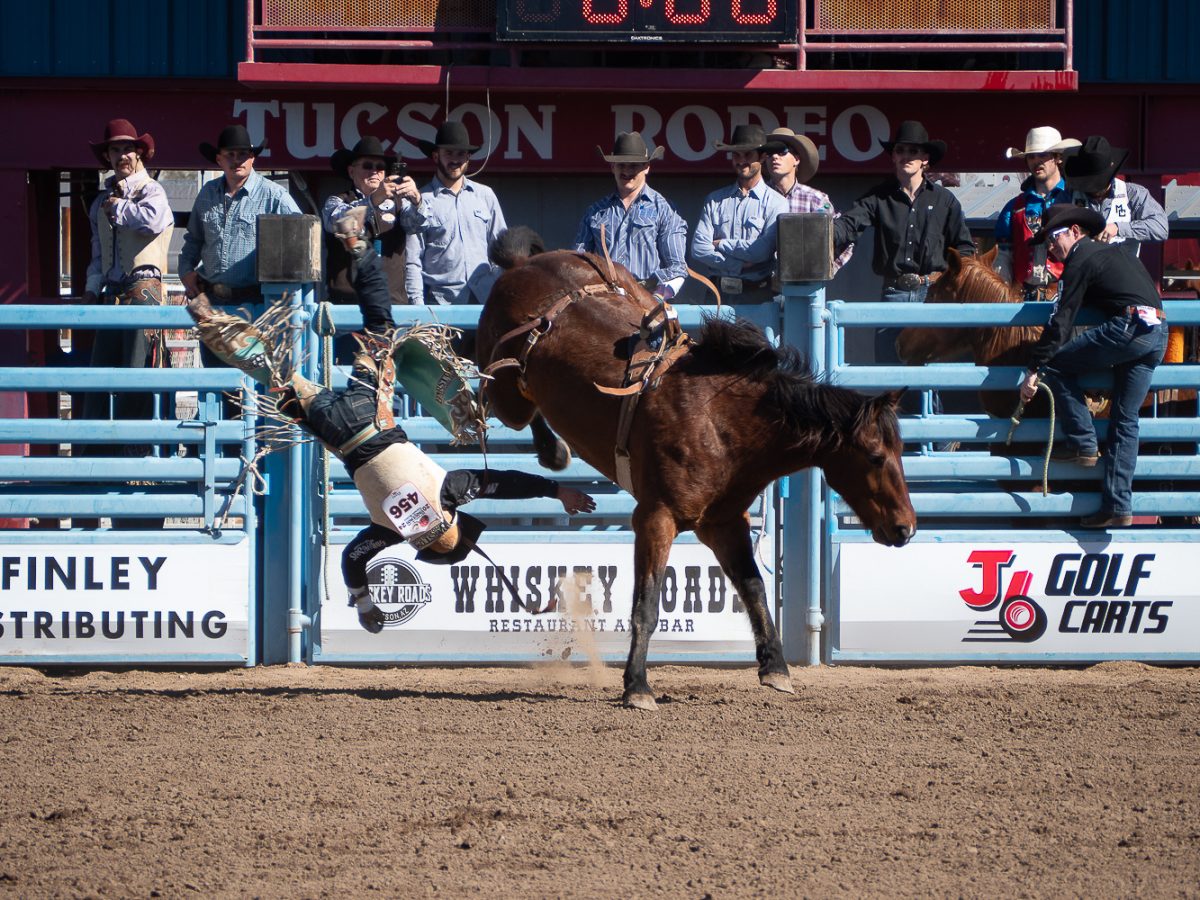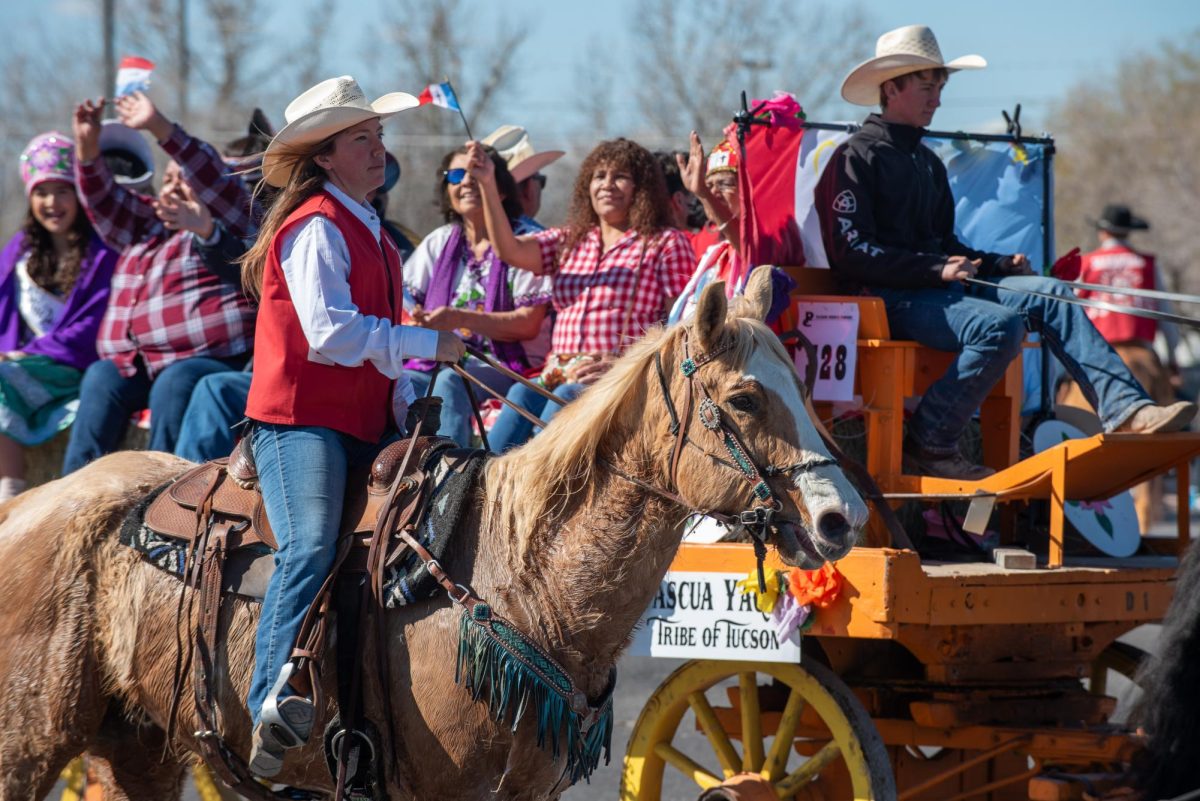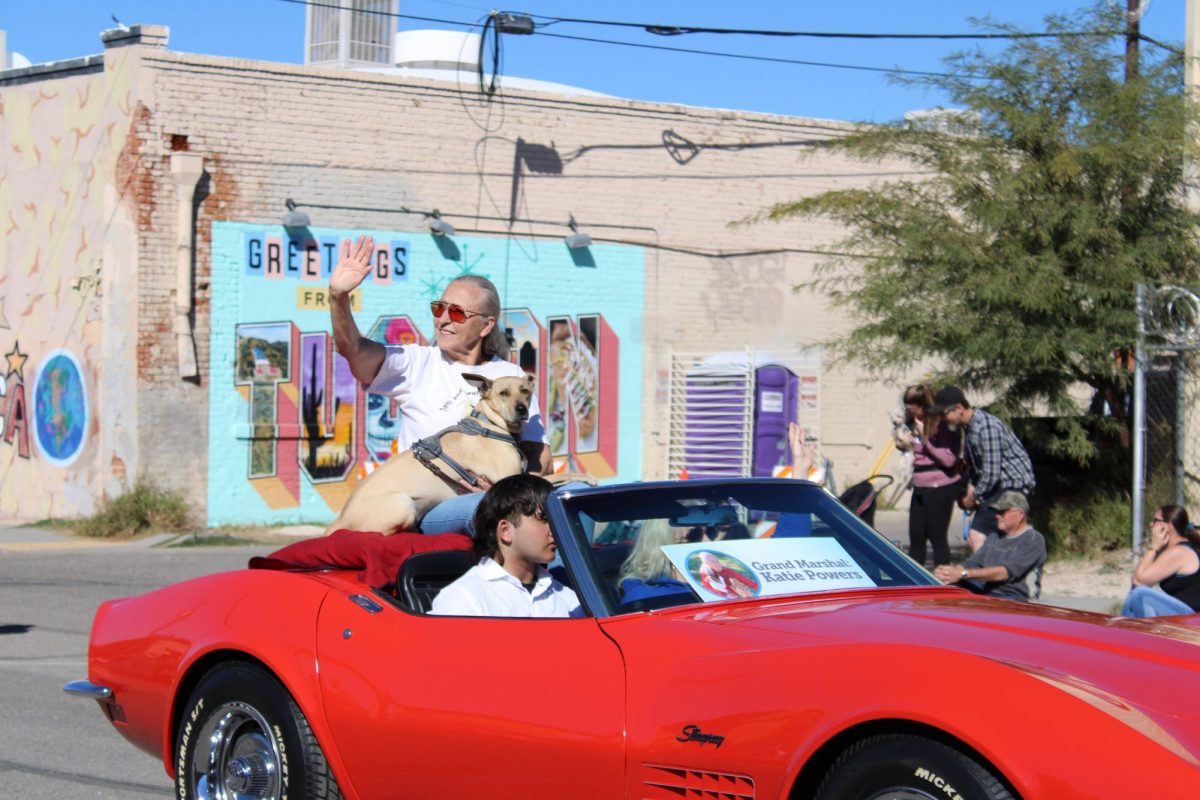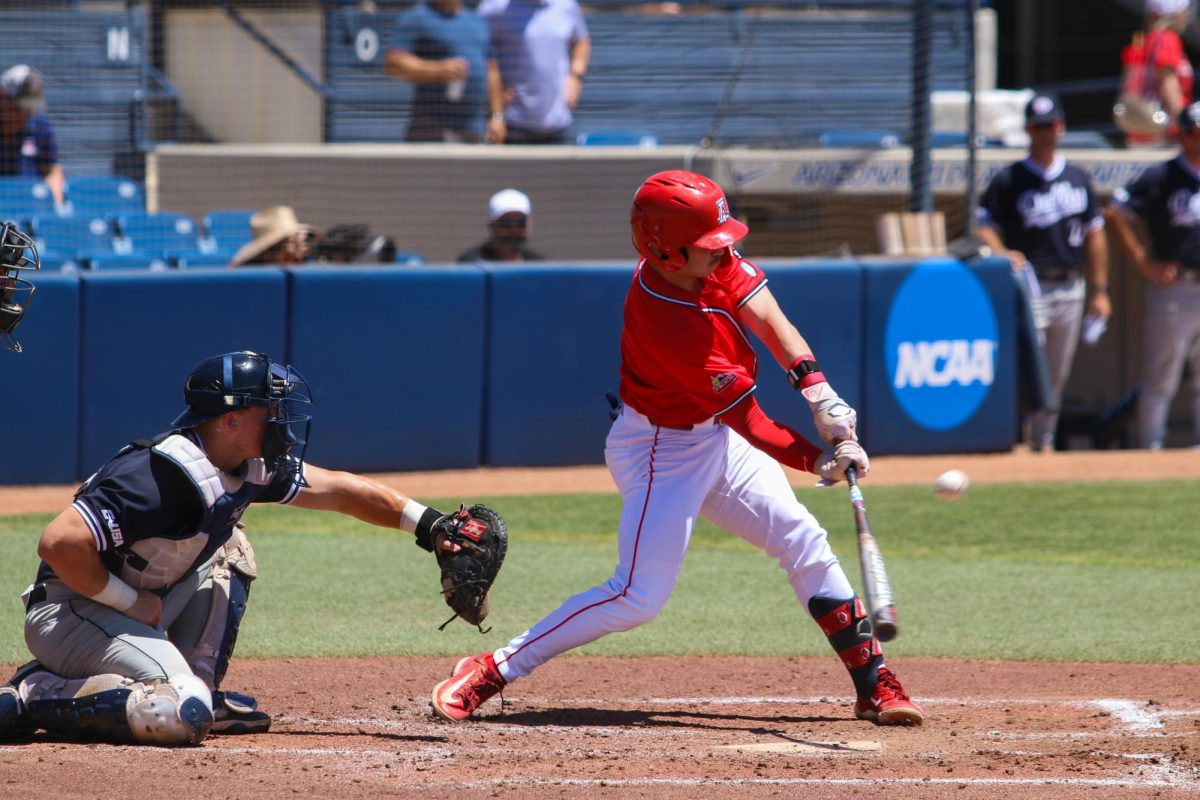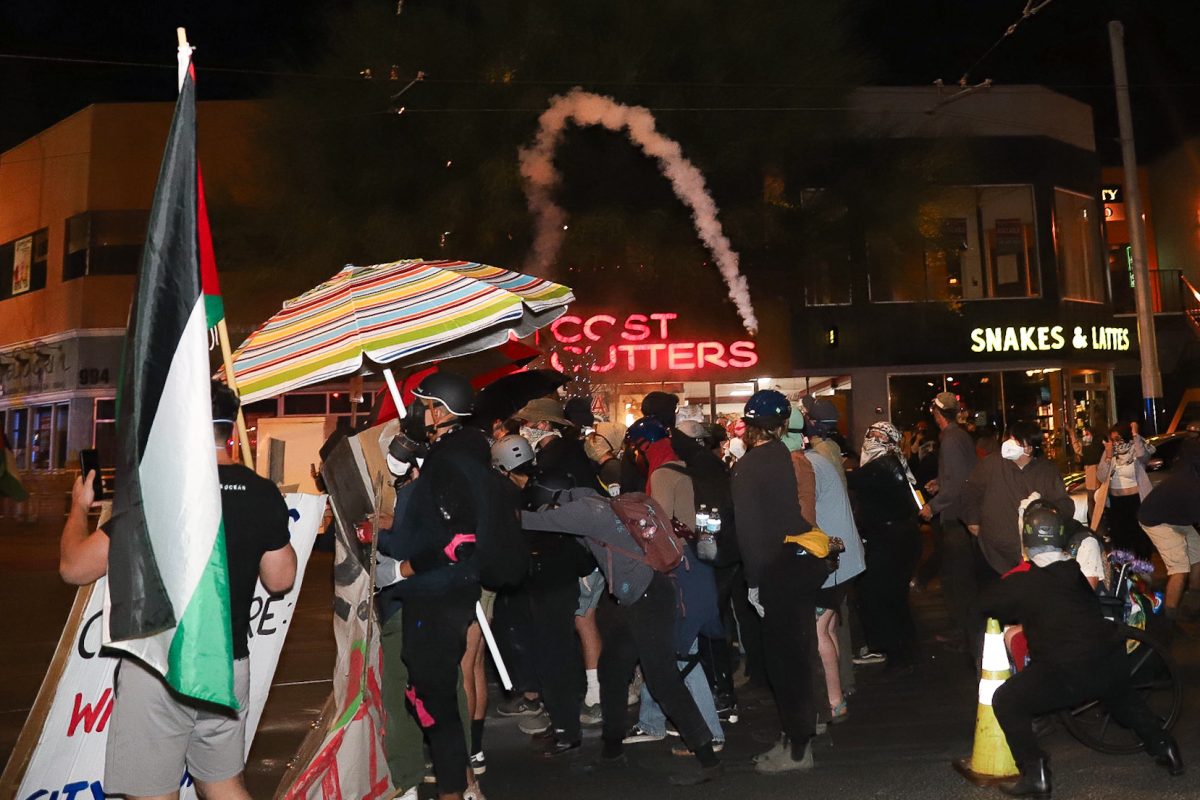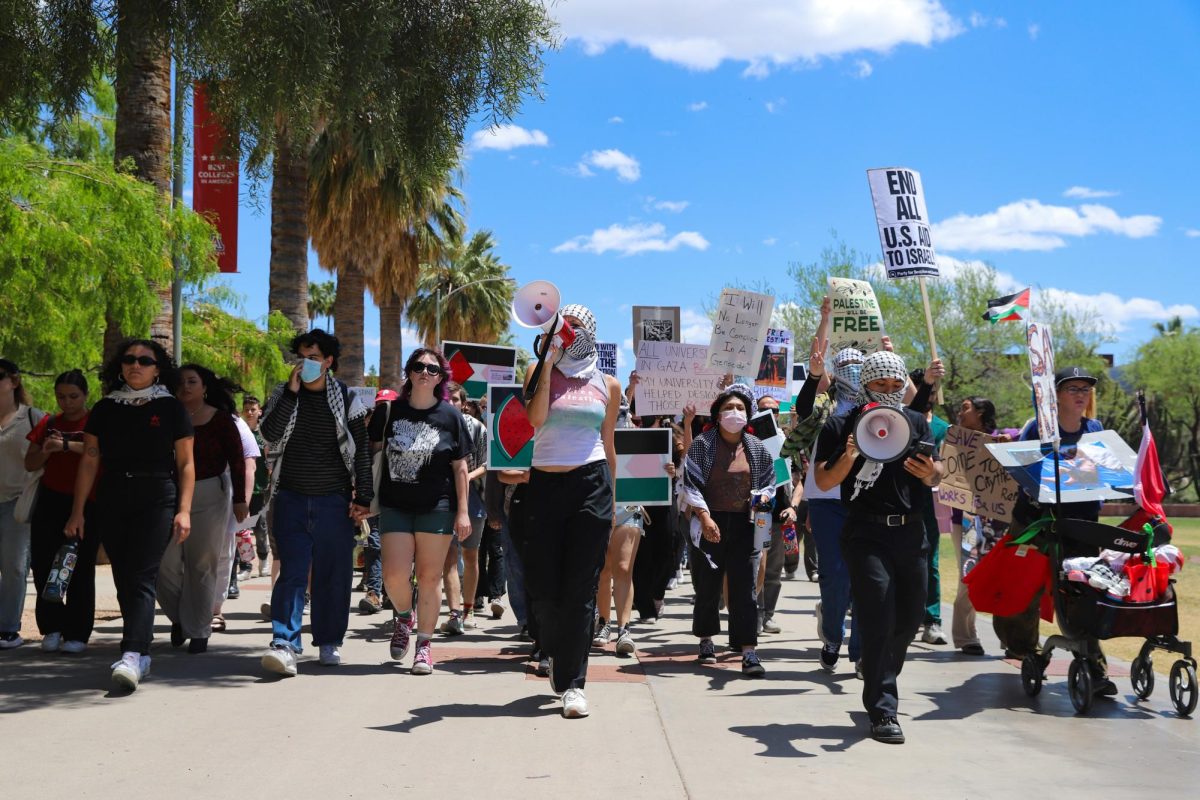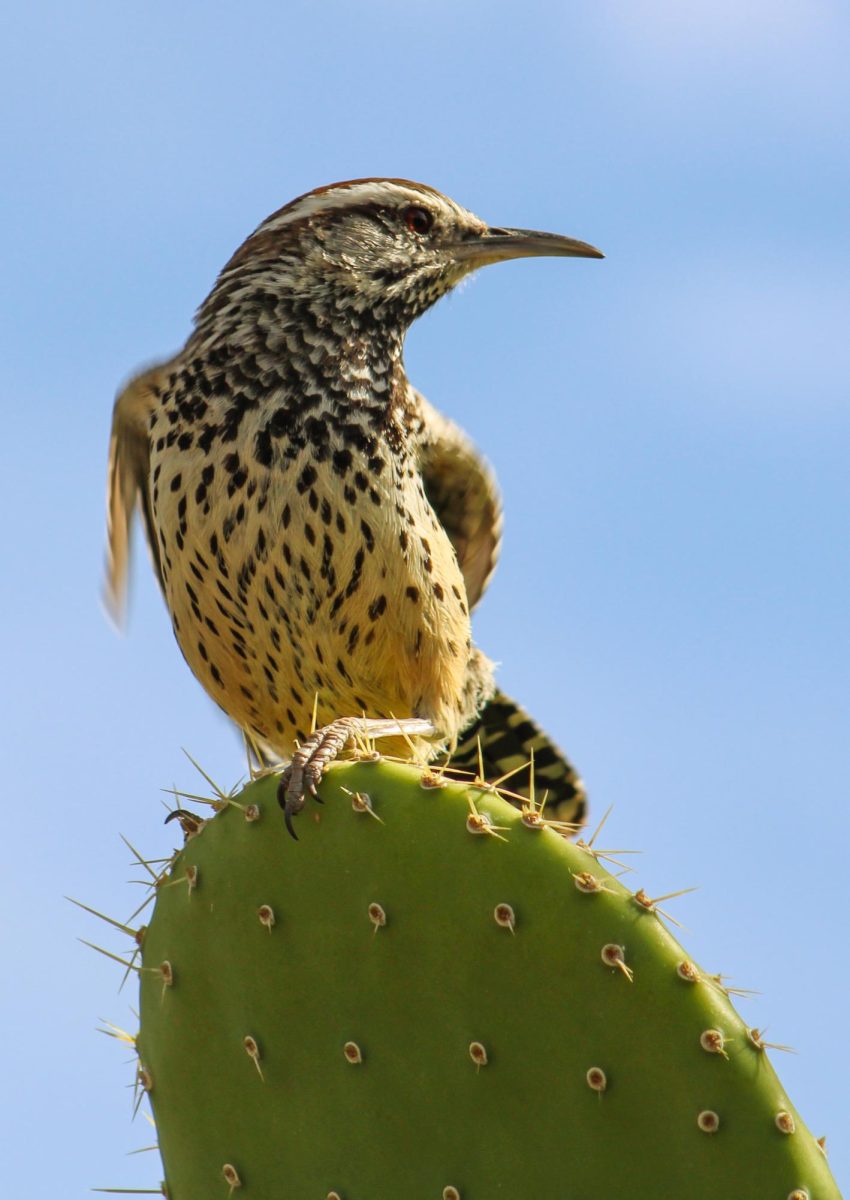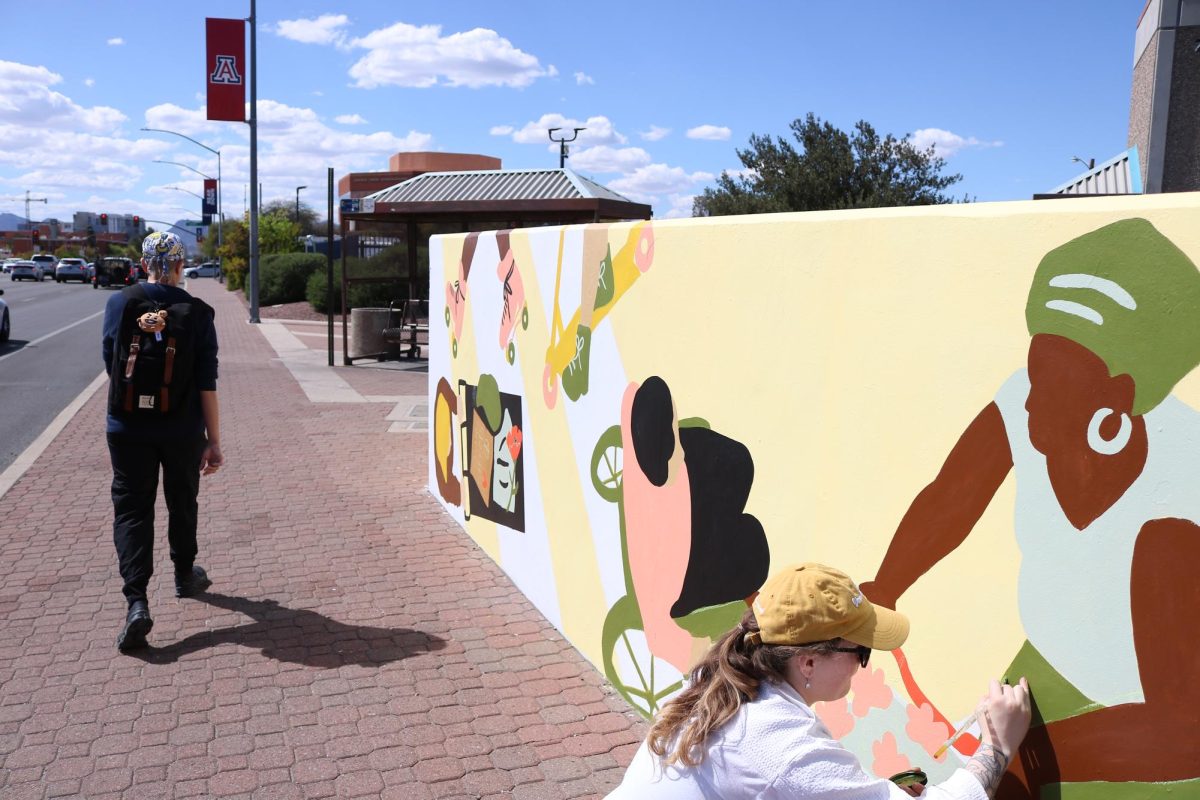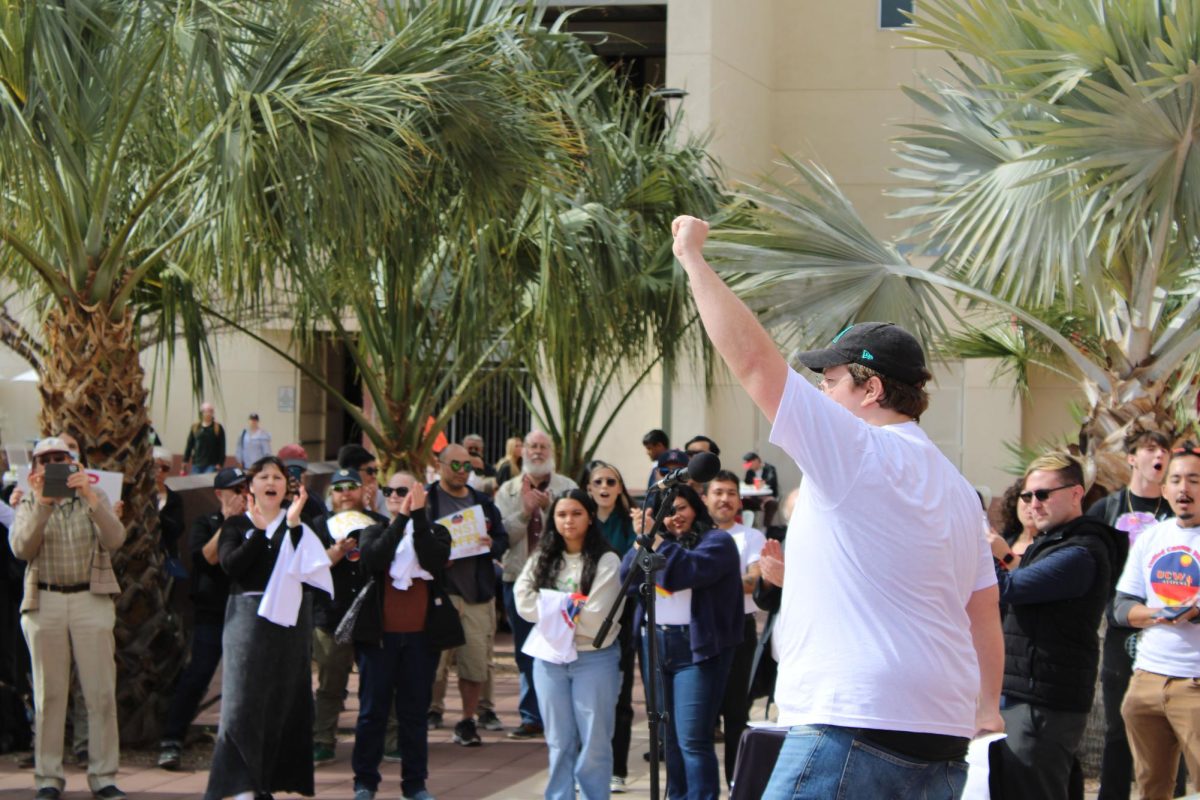The saguaro, the iconic cactus of the Southwest, stands tall welcoming you to the Sonoran desert. Buffelgrass, an enemy to the saguaro, threatens that welcome.
Buffelgrass, native to Africa, Asia and the Middle East, was brought to the U.S. for cattle forage and erosion control in the 1930s, according to the National Park Service. But buffelgrass has escaped where it was originally meant to be and now crowds the Sonoran Desert.
Although the grass looks like it would be no match for the towering, strong saguaro, it’s a fuel for wildfires and outcompetes native species in the desert for water, nutrients and sunlight.
David Walker, a member of the Menlo Park Neighborhood Association, has been pulling buffelgrass on and off for the past 22 years and leads groups through “A” Mountain on pulls.
On Friday, Feb. 23, Walker met a group of new and veteran grass pullers at Sentinel Peak Park on “A” Mountain in the afternoon. He led the team about half a mile up the trail, through areas that have been worked on by past grass pullers where natives now thrive.
After an easy and quick pulling demonstration, the group got to work.
For two hours the volunteers pulled grass and chit-chatted as the sun descended over the mountains, creating pink shadows across the Santa Catalina Mountains. Walker calls this Friday afternoon pull “happy hour.”
He says the threat of invasive buffelgrass is real. It competes with native species in the Sonoran Desert for water, nutrients and sunlight and is fuel for wildfires. “There are many areas that have lost the native vegetation due to high heat grass fires,” Walker said. “This changes the whole ecosystem.”
The plant life in Tucson is diverse and beautiful and is one of the reasons Walker continues to pull buffelgrass. He loves being outdoors. “So why not get together with others to do a little restoration work,” Walker said.
Marcie Shatz, another buffelgrass puller, has been working with the Sonoran Desert Weedwackers in Tucson Mountain Park since 2008. She was recruited by her son to volunteer while he was in high school and pushed her to “carry on the fight” when he left town for college. “What started as a ‘favor’ to my son quickly became a gratifying way to connect with the desert environment and help to preserve it,” Shatz said.
The evidence of buffelgrass destructiveness to the desert environment is out there. Shatz said, “Left unchecked, our Sonoran Desert would eventually become a savannah of [buffelgrass].”
Shatz continues to fight to get rid of buffelgrass after 16 years.
February marked the start of the Arizona-Sonora Desert Museum’s “Save Our Saguaros” month, a time dedicated to bringing awareness and fighting buffelgrass, and this year they have a project for the community of Tucson.
The Arizona-Sonora Desert Museum hired Tucson artist Wesley Creigh to design a paint-by-numbers mural for the community to paint on “A” Mountain to help bring awareness.
Vianey Avila, the invasive species grant and project administrator for the museum, says they chose “A” Mountain as the location for the mural because it’s an iconic area for Tucson, and it’s where their buffelgrass pulling volunteers do a lot of work.
The museum was made aware of two wall spaces for the mural by the City of Tucson Parks and Recreation Department on “A” Mountain. “[The mural] takes you in between this beautiful landscape outside the city limits but where you can still see the city. It’s like this urban interface area,” Avila said.
The mural project is meant to bring the community together, educate and celebrate the volunteers. The mural has multiple aspects to it. “We really wanted to raise awareness of the issue, the fire threat of buffelgrass and also the outcompeting of natives,” Avila said. “The two major walls we wanted to celebrate biodiversity and our volunteers who have been doing this great and amazing amount of work pulling buffelgrass.”
The first community painting event happened Saturday, Feb. 24. The turnout was good enough that the mural was almost entirely finished. The next painting event happened on Sunday, March 3 and was revealed to the whole community on Saturday, March 9.
The mural is there for the community, to spread awareness and celebrate volunteers like Walker and Shatz.
“The [buffelgrass] weedwackers are certainly an unusual group of individuals, united behind and driven by a mission to protect this precious environment,” Shatz said. “We are welcoming to all; it doesn’t matter to us how experienced a puller is because any plant they pull is one less that we have to pull!”




